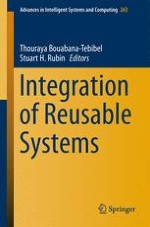2014 | OriginalPaper | Buchkapitel
Interpreting Random Forest Classification Models Using a Feature Contribution Method
verfasst von : Anna Palczewska, Jan Palczewski, Richard Marchese Robinson, Daniel Neagu
Erschienen in: Integration of Reusable Systems
Aktivieren Sie unsere intelligente Suche, um passende Fachinhalte oder Patente zu finden.
Wählen Sie Textabschnitte aus um mit Künstlicher Intelligenz passenden Patente zu finden. powered by
Markieren Sie Textabschnitte, um KI-gestützt weitere passende Inhalte zu finden. powered by
